Moving Day in Los Angeles: A 30-Day Countdown Checklist
- TCS Hello
- Jul 24
- 4 min read
Ask any local mover and you will hear the same warning: a Los Angeles relocation is never a simple truck-ride across town. A 2024 Move dot org comparison put LA in the top five most challenging metro areas for household moves after measuring permit costs, curb-space rules, and average utility lead times in fifty cities (https://www.move.org/moving-permits). One block might allow all-day parking, while the next posts 7 a.m. street-sweeping signs. Los Angeles Department of Water and Power often quotes ten to fourteen days to energize a new account, and without that service letter many buildings will not let a freight elevator run. Layer in summertime heat that can top 100 °F in the Valley and you have a recipe for stress.
The good news: every snag on that list is predictable. Brokers and moving foremen who handle dozens of closings each year follow a set rhythm permits first, utilities next, packing in timed waves, and a final walk-through with camera in hand. The four-week timeline that follows borrows that field method and ties each task to its earliest filing date. Use it as a pacing tool whether you are moving from a one-bedroom loft in Koreatown or a hillside house in Glassell Park.
Thirty-day countdown
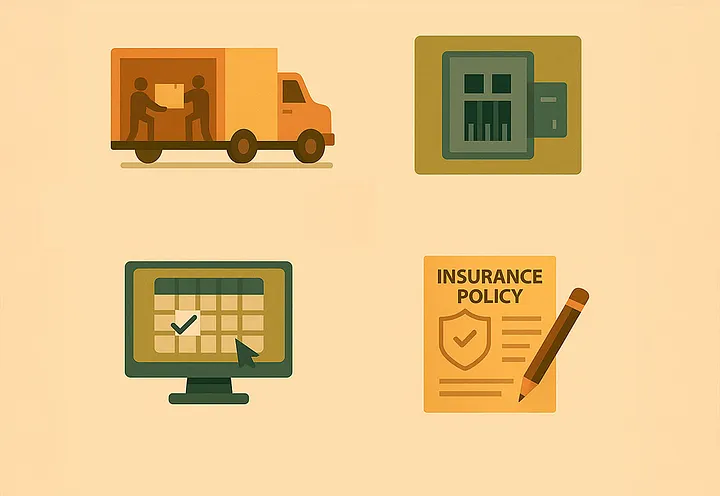
30 days out
Book a licensed mover; summer Saturdays and rooftop-elevator windows disappear first.
If the new panel looks dated, request an LADWP service-capacity letter (seven to ten business days) (https://www.ladwp.com/home/power/service-planning)
Grab the trash and recycling calendar for the new street on MyLA311 so purge weekends match pickup days (https://myla311.lacity.org)
Update your homeowner or renter policy with the closing date and new parcel number escrow will not release keys without it.
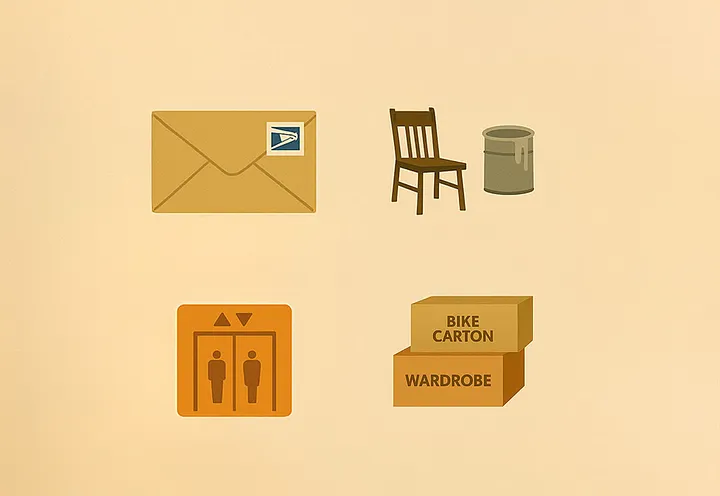
21 days out
File an online USPS change of address; the fee is one dollar (https://moversguide.usps.com)
Reserve bulky-item pickup through L A Sanitation for old furniture or paint; slots fill a week ahead.
If you are in a building, lock in the freight elevator and send the mover’s insurance certificate.
Order artwork sleeves, bike cartons, and wardrobe boxes; specialty supplies ship slowly in peak season.

14 days out
Apply for a Temporary No-Parking permit from LADOT, then post the signs forty-eight hours before the truck arrives (https://ladotparking.org/permits/ppd-permits/)
Arrange SoCalGas and internet start dates; providers quote five to seven days.
Begin serious packing. Donate or sell items unused for a year. Box up books and off-season clothes first, label by room, and track box numbers on a phone note.
Scan escrow papers, appliance manuals, and hazard maps to one cloud folder.
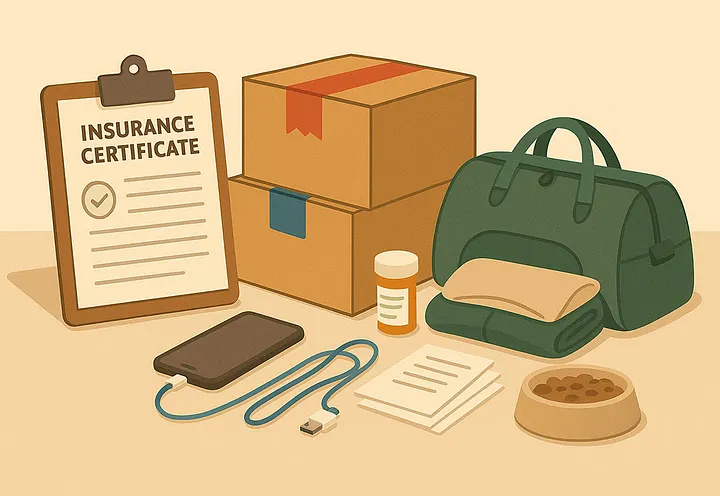
7 days out
Confirm the mover’s insurance meets building limits (one million liability, two million aggregate are common).
Finish labeling; use bright tape on fragile kitchen boxes.
Pack a go-bag with prescriptions, chargers, vital papers, pet food, and a change of clothes insurance against a delayed truck.

First 72 hours in the new place
Light water-heater pilots and swap the HVAC filter to catch move-in dust.
Add the address to the MyShake earthquake-alert app (https://myshake.berkeley.edu)
Walk each room with your phone camera, checking for leaks, loose rails, or tripped breakers.
Schedule the first curbside pickup through MyLA311 so boxes do not pile up.

Small moves that save money
Post the move date on Nextdoor or the neighborhood Facebook group a week out; locals often welcome buyers early and buy extra furniture.
Tuesday or Wednesday moves are cheaper crew rates dip mid-week and traffic is lighter.
Include the phrase “moving day Los Angeles” in photo captions and alt text; friends find your tips later and search engines link to local guides.
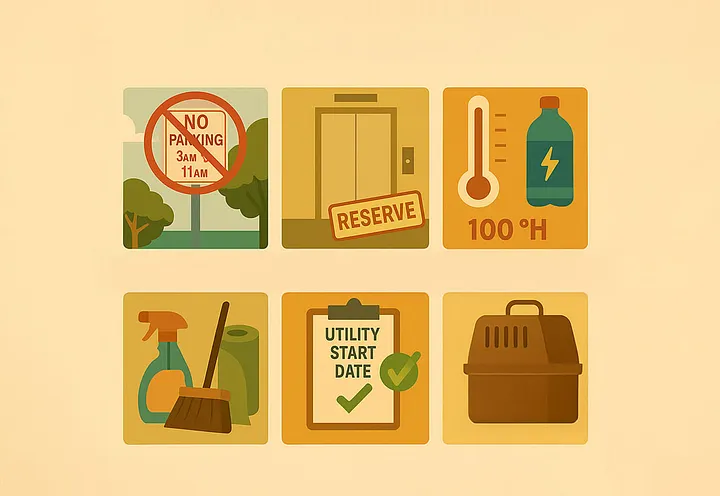
Common pitfalls and quick fixes
Street sweeping tickets cost fifty-eight dollars; check curb signs and move the truck in time (https://ladotparking.org/parking-meters/parking-restrictions-holiday-parking)
Freight elevators require reservations; late requests can add two-hundred-dollar penalties.
Valley afternoons often top 100 °F in July keep coolers of water and electrolyte mixes on hand. National Weather Service climate data confirm these highs (https://www.weather.gov)
Pack spray cleaner, towels, and trash bags for both addresses to save deposits and start fresh.
Arrange power, gas, and internet at least five business days early so lights and Wi-Fi work on arrival (https://www.ladwp.com/account/start-or-add-service)
Homes with garages or attics need roughly fifteen percent more boxes than apartments (SpareFoot storage survey 2025) (https://www.sparefoot.com)
Update delivery apps and marketplaces after the USPS change so parcels land at the right porch.
Keep a small toolkit screwdrivers, utility knife, tape measure, bulbs, chargers in your car.
Photograph walls and appliances before unloading; time stamps guard deposits and warranties.
Arrange pet or child care off-site so movers can work with doors open.
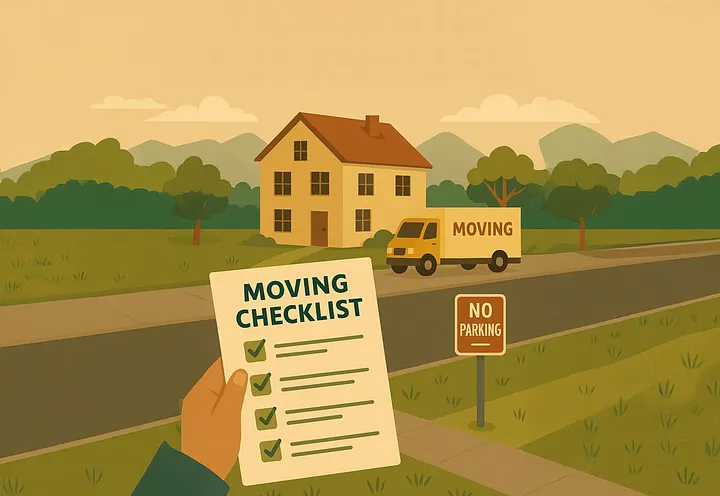
Final thoughts
Treat your Los Angeles move the same way a contractor treats a remodel: survey requirements, lock in permits, and order materials before demolition day. Post curb signs two days ahead so the truck lands in a legal space; confirm freight-elevator hours to avoid surprise fees; place utility start orders a full work-week early so lights, gas, and Wi-Fi click on when the front door opens. Mid-week moves (Tuesday or Wednesday) shave dollars off crew quotes and dodge the Friday traffic swell.
Keep people and pets in the plan, too. July averages from the National Weather Service show Woodland Hills peaking near 100 °F (https://www.weather.gov) heat that saps movers and risks dehydration. A cooler packed with water, basic first-aid, and electrolyte powder is worth the small weight. A toolkit, cleaning tote, and go-bag ride up front so the essentials remain close even if the truck schedule slips. Photo logs of both the old space and the new protect deposits and warranties long after the boxes disappear.
Follow the timeline, adjust the dates to match your escrow or lease, and most surprises shrink to small course corrections. When the last box slides off the ramp you will have power, internet, and no parking tickets waiting. That calm first night may be the best return on all the early paperwork.




Comments